
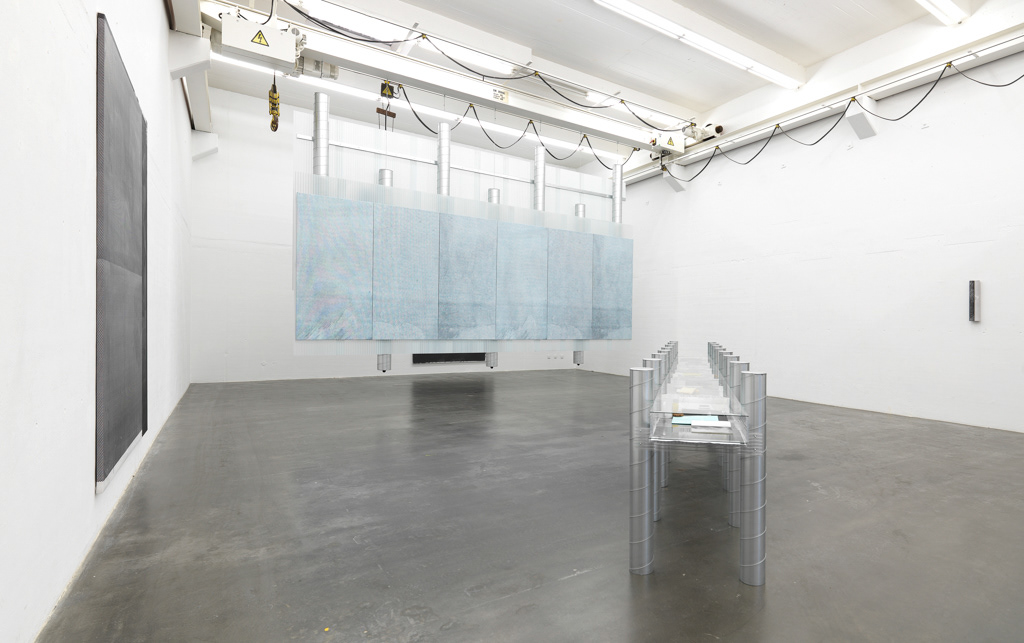
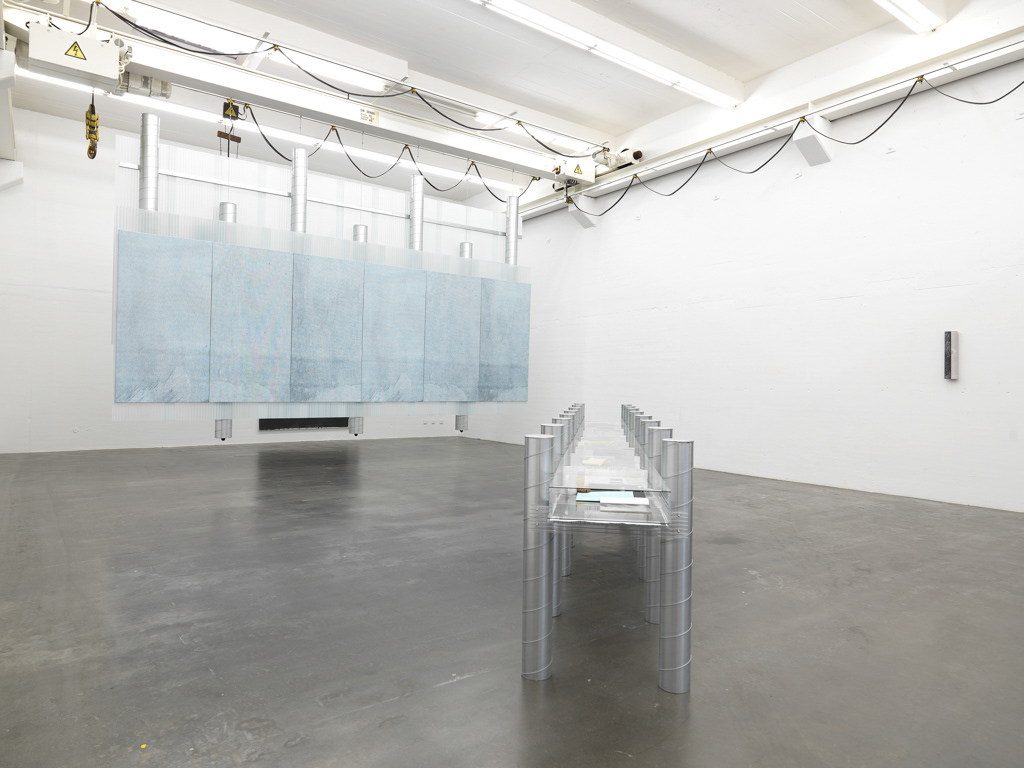
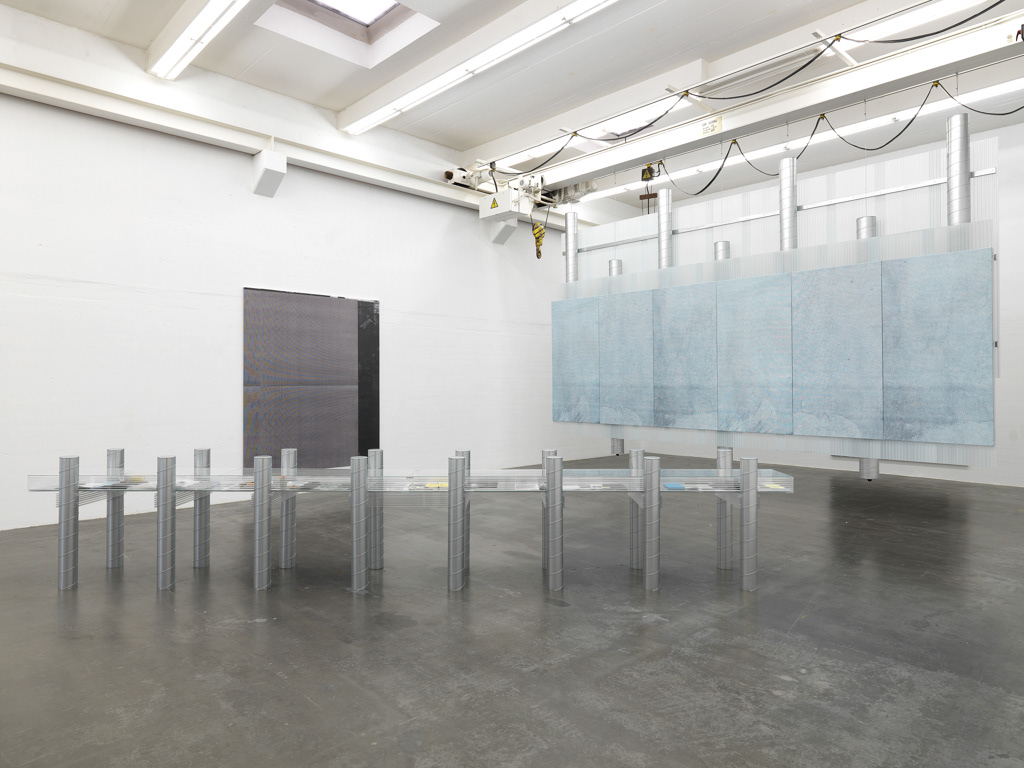
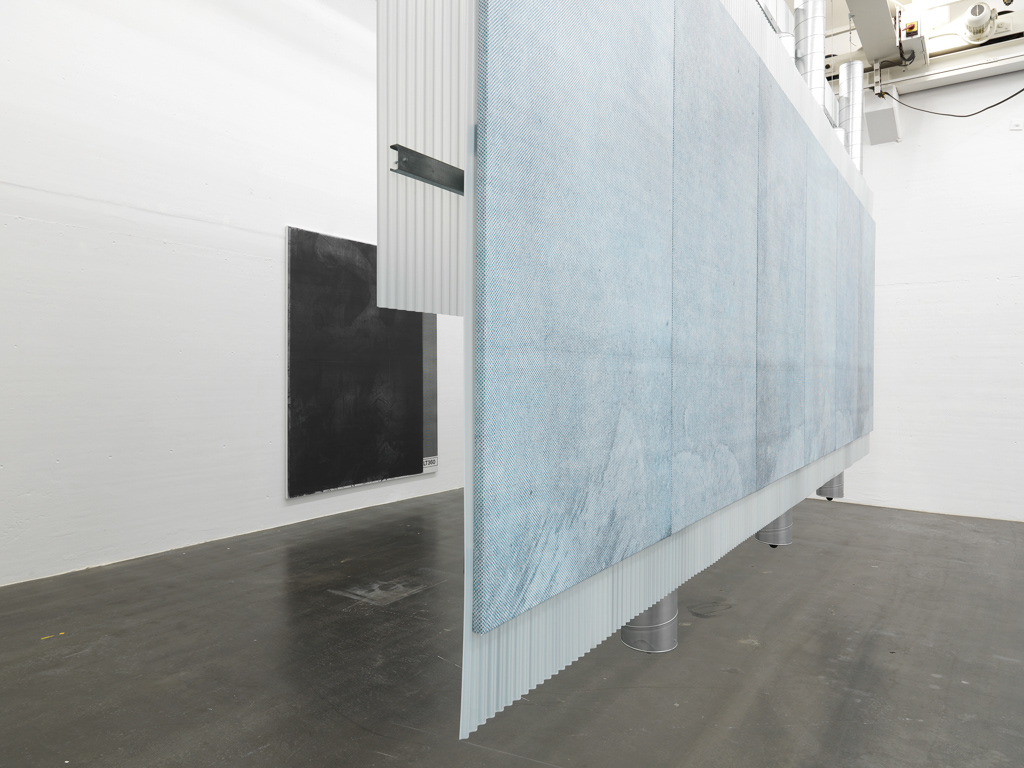



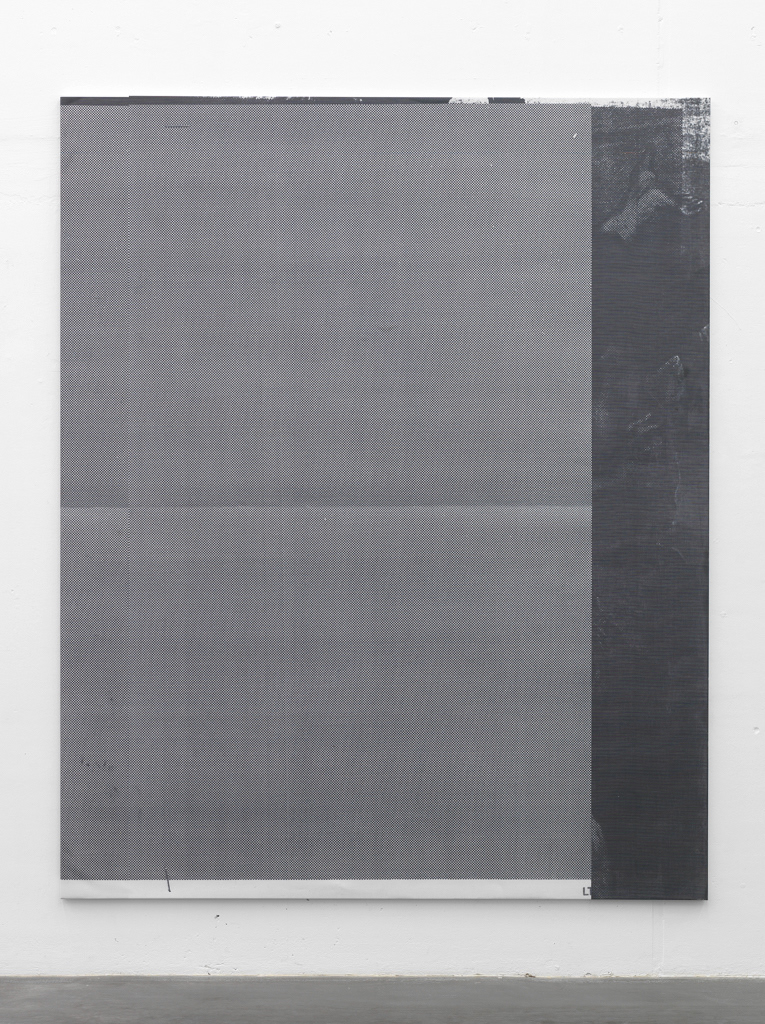

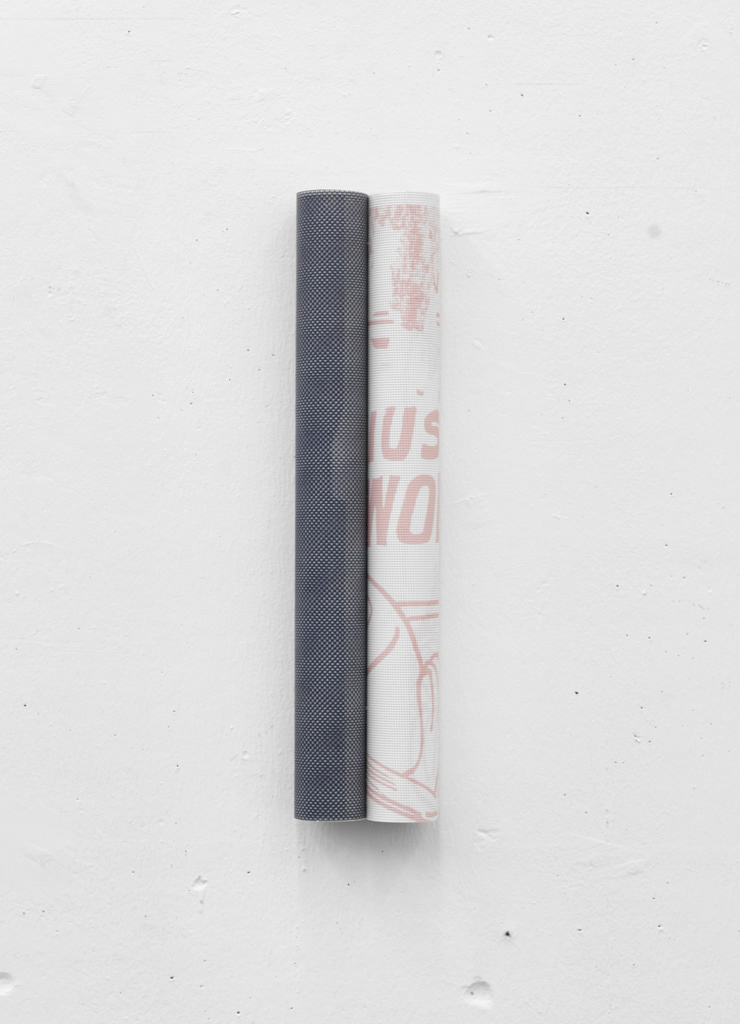
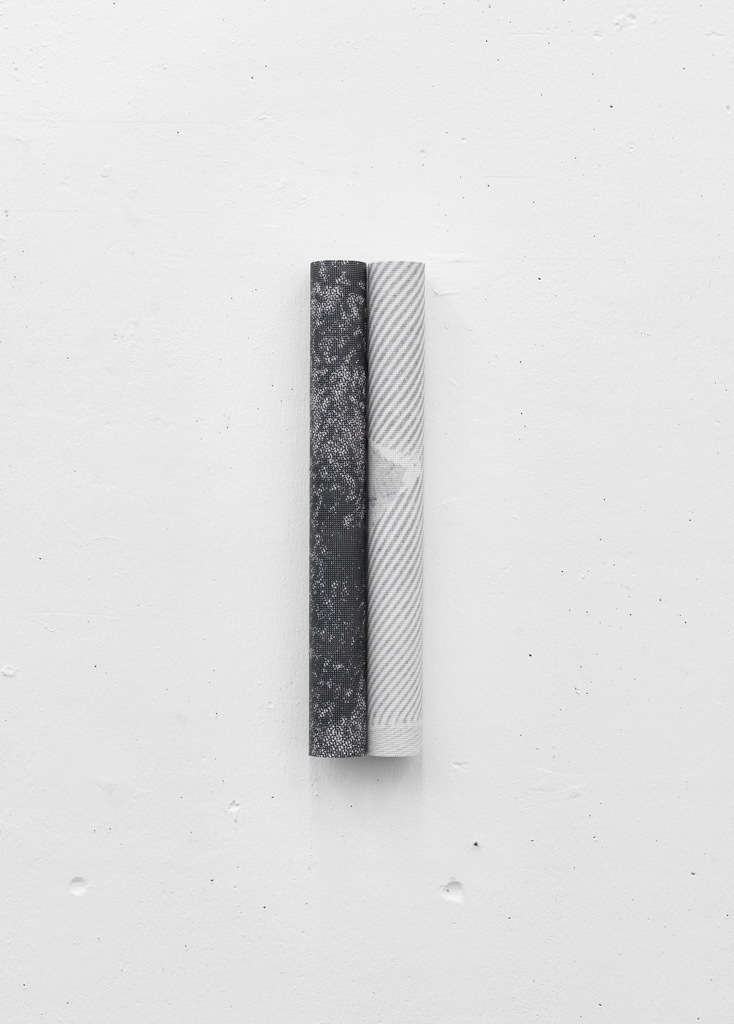

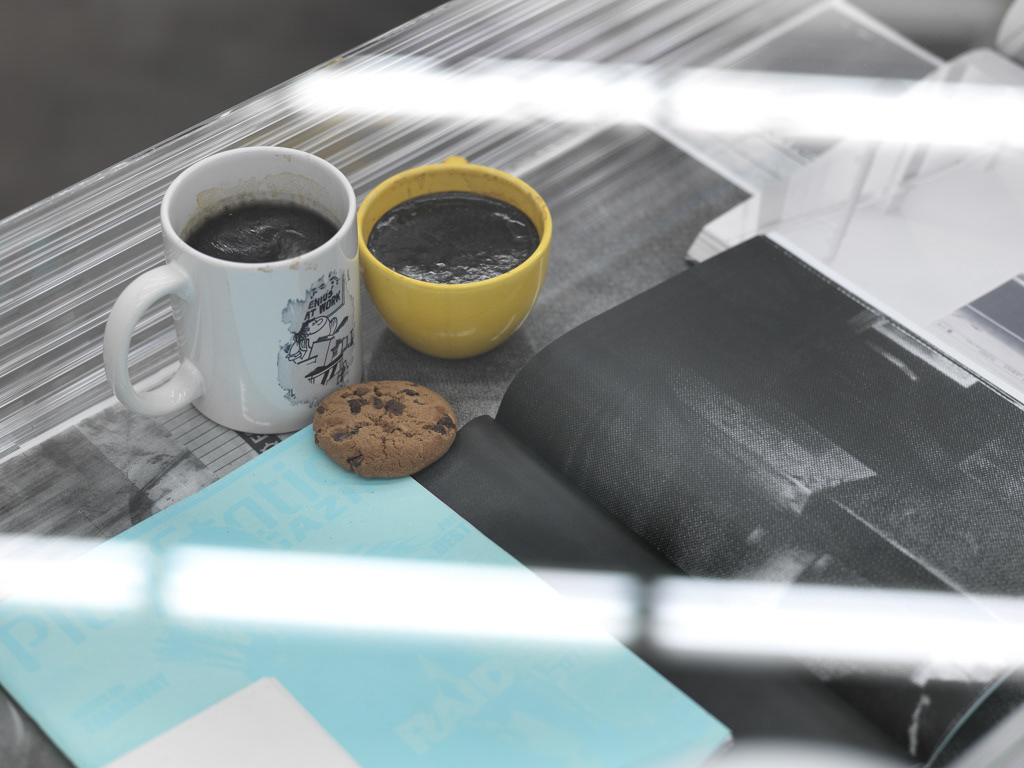




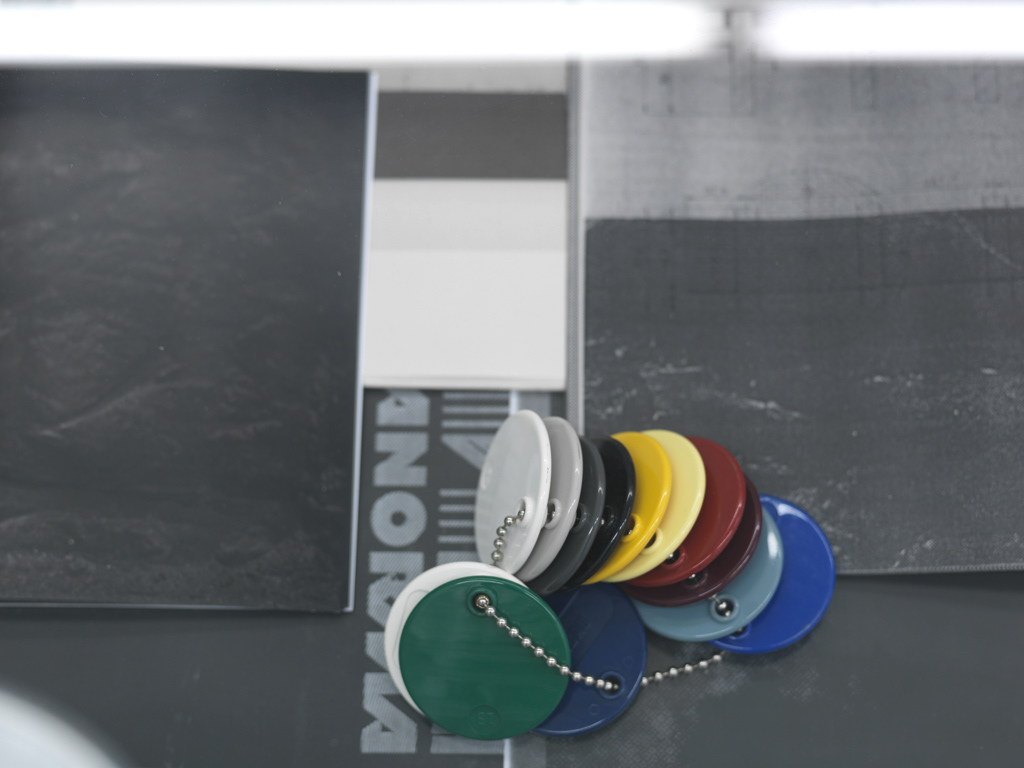
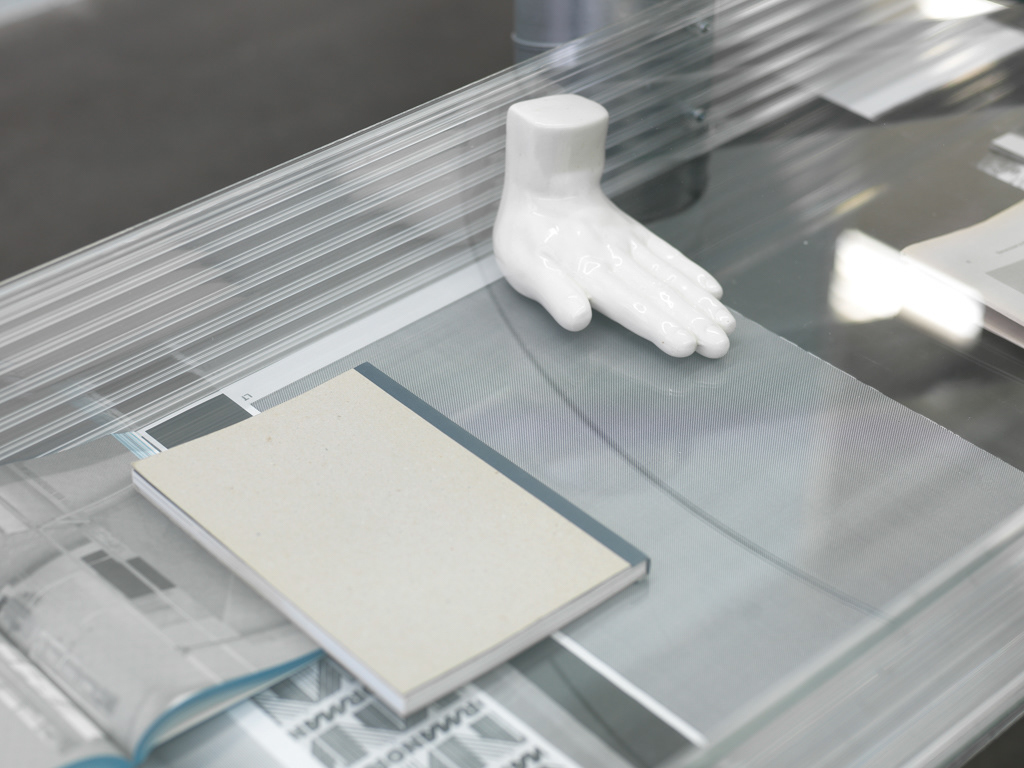

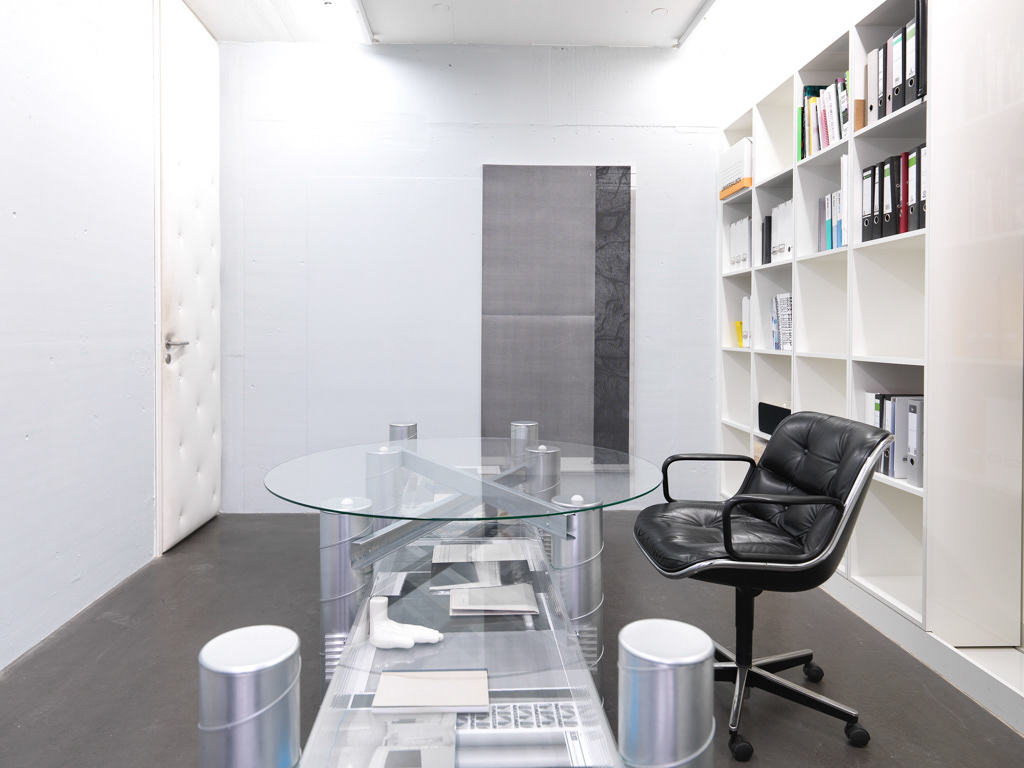

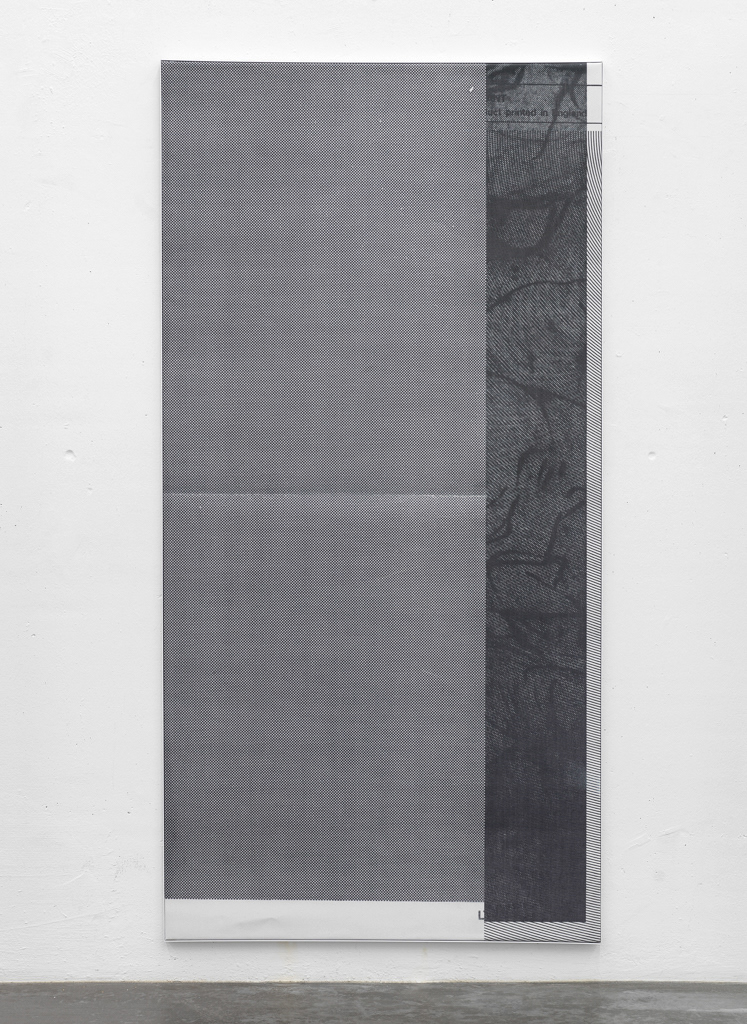
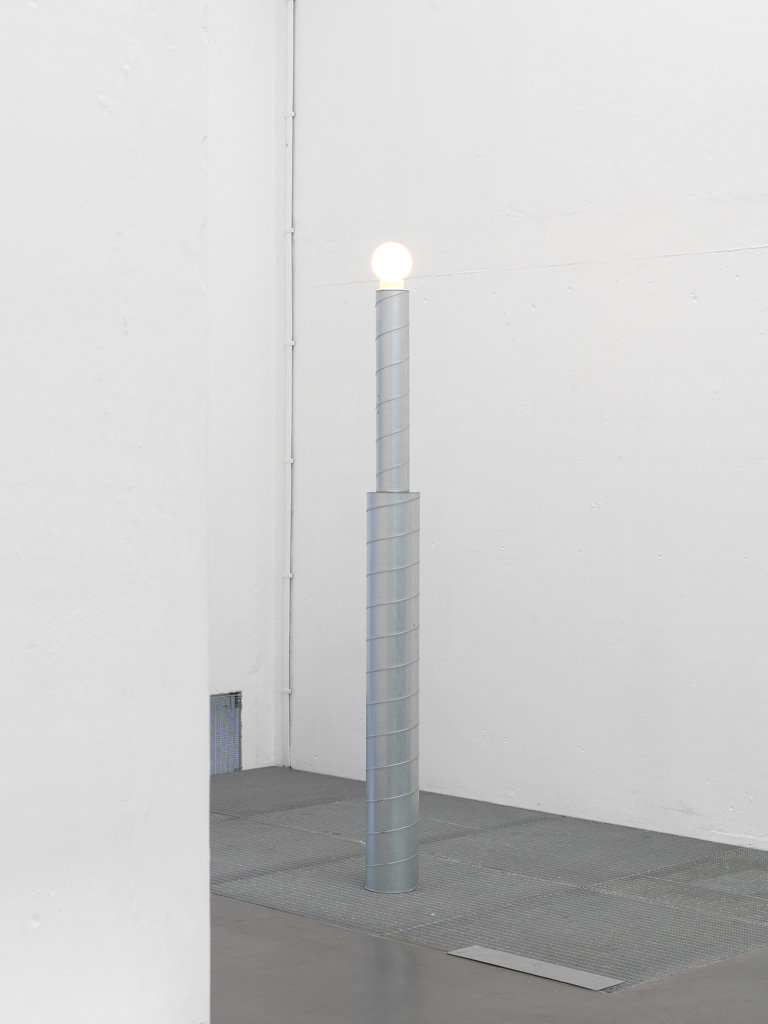
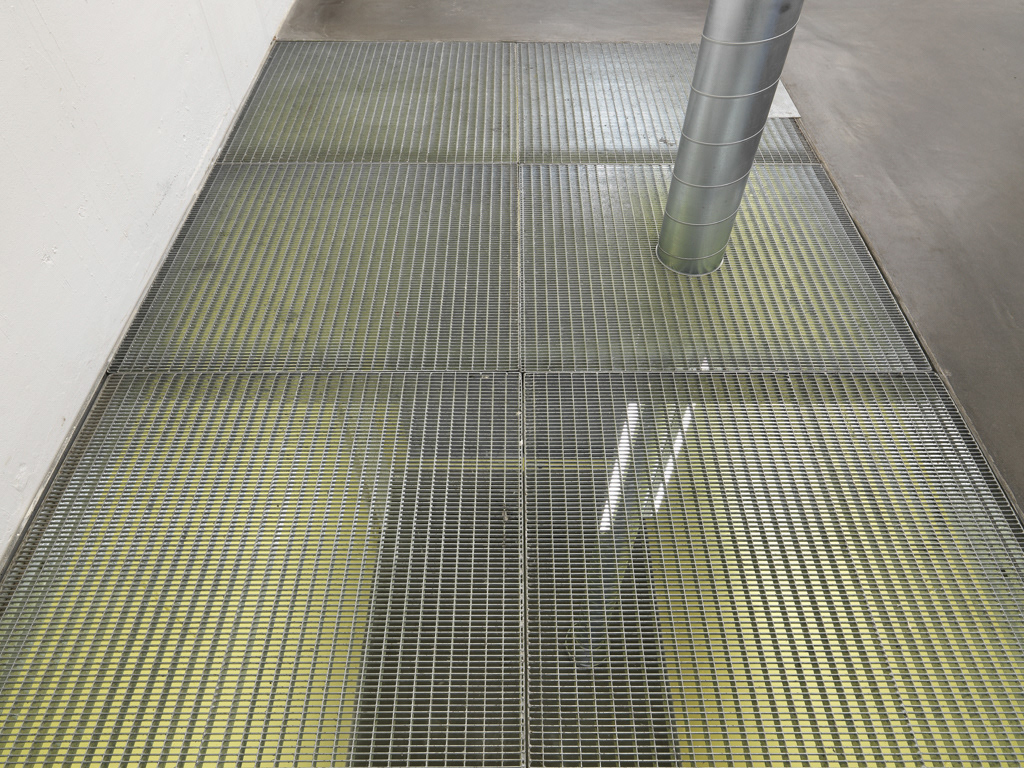




‚Goods Between Floors’ soloshow
scenography / Theo De Meyer
Berthold Pott gallery Cologne Germany 2019
In his exhibition Goods Between Floors, the Belgian-born artist Manor Grunewald (b. 1985) investigates the interplay of isolation and integration, determined by the spatial positioning of his artworks. The artist’s biography, as well as the iconographic and geological location of Belgium as his country of birth, allow for a historical link, namely to the legendary Wide White Space Gallery (1966-1977) in Antwerp. The gallery was founded by Anny de Decker, together with her husband, the Düsseldorf-born artist Bernd Lohaus (1940-2010). Wide White Space Gallery was, and continues to be, the essential nucleus for the model of an avant-garde gallery. As a result, it is all the more interesting that Bernd Lohaus assumed several functions within the staging of art, not only as an artist, but also as a curator. The situation is similar in the exhibition Goods Between Floors by Manor Grunewald. Both artists are concerned with the relationship between objects, as well as between the objects and the space they occupy. Bernd Lohaus included language as a component of many of his works. His artistic interventions were limited to simple, sensitive actions. In terms of art history, the work of Wide White Space Gallery and the art of Bernd Lohaus can be seen within the context of Fluxus, Social Sculpture, Arte Povera, Minimal Art and Material Art.
The works of Bernd Lohaus were created against this background and its tendencies and represent a solitary position within this. That which Bernd Lohaus once demonstrated with his works is taken further by Manor Grunewald in a targeted manner. He holds up a distorted mirror to reality, in which there is more to discover than the first glance might suggest. The ideal of art to convey its imaginary and therein substantial value has since become more difficult. Today, every work of art should first mean something, express its content directly, which justifies being understood in its entirety. If artistic content still exists, it does not always correspond to the canon of social acceptance, since artists never do what is expected of them. This is precisely why works of art represent society. It is these images, sharpened to a momentum; the crystallisation of the non-unified, non-independent, indeed even eclectic society, in which we live today.